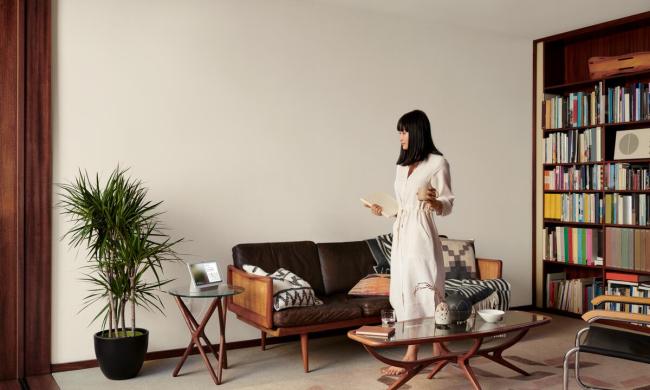If you were one of the many people to adopt the Google Home when it first launched in 2016, you’ll be happy to know that a potential successor is on the horizon. Images of the new speaker, presumably with the Nest branding, have recently been spotted in a regulatory filing in Japan, which also seems to coincide with a recent FCC filing. The images are surprising, given that the design appears to be a considerable overhaul over the original — unlike the similarities between the Google Home Mini and Google Nest Mini. Unless there are some other substantial features, it doesn’t bode well for a convincing argument to buy one when it’s released.
Substantial design change
Right away, it’s evident from the images that Google is distancing this new Nest speaker from the original Google Home. While you can certainly bet that it will be available in a few colors, it ditches the customization of the original — where you can swap out the shell of the base for other colors. Instead, it’s wrapped in what appears to be the same mesh fabric that covers the Google Home Max. In fact, it shares more similarities with Google’s top of the line smart speaker.
The oblong-shaped speaker appears to be taller than the original, standing in at 220mm (8.6 inches), which is a huge jump over the 143 mm height of the original. Its chunkier size could be an indication that it’s sporting the necessary internal components to deliver an even richer audio experience. Furthermore, the rubber bottom indicates how it will stand upright — while the proprietary power port and mute switch are found on the other side of the speaker.

What’s tough to discern here is if this new speaker will provide a similar 360-degree audio experience, similar to that of the Apple HomePod and Amazon Echo Studio. From the looks of it, the mesh fabric covers the entirety of the speaker, so it could mean that audio performance will be one of its standout features.
Iterative upgrades won’t be enough
When the Google Nest Mini launched last fall, it offered a few new advantages over its predecessor. This is a crucial lesson because this new Nest speaker may find itself in the same predicament, unless there’s something astoundingly special that would give consumers a valid reason to make the upgrade. Seriously, you’d expect something big given it has been nearly four years.
We’ve explained how the next Google Home speaker needs more than just better audio in order to succeed, but at the same time, consumers are going to scrutinize the value proposition of making the upgrade. If it’s solely an iterative upgrade to the audio performance similar to the Nest Mini, owners of the original Google Home, like myself, won’t be convinced enough. We need more, we deserve more.
Smart displays, in particular, have proven how much more valuable they are in the smart home. The visual representation alone adds a new layer of interaction and functionality, which is why they’re the logical upgrade for a smart speaker replacement. Sure, they cost more, but sales have made them obtainable — the Lenovo Smart Display 7 and Google Nest Hub are both priced under $100 at the moment.
Future proof with convergence
I’m not sure how many people actually tack or hang their Google Nest Mini speakers to the wall, but I’d bet that it’s not something that people think about doing with a smart speaker. That’s another lesson that this new Nest speaker needs to be cognizant of, just because it doesn’t add much value. Instead, I’m hoping that Google is bearing in mind some of the upcoming trends in the space — namely when portless smartphones come to fruition. While it’s unlikely that this speaker would offer some kind of wireless charging functionality based on the recent images, it brings me to my next point.

Convergence is an idea that we’ve seen in several other smart home gadgets. The Google Nest Hub Max is the perfect example of this, since it doubles as a Nest Cam to watch over your home when you’re away. Being multifunctional is an appealing quality for any device, so I’m hoping that we’ll see something more with the new Nest speaker. Another example is LIFX’s smart LED light bulbs, which feature embedded sensors such as an accelerometer, ambient light sensor, and infrared sensor. Even though many of them are inactive, LIFX wants to ensure that its bulbs remain future-proof.
Going back to the design of this potential Google Home successor, what we don’t see is what’s underneath the fabric covering. The Nest Mini already features embedded sensors that can detect when a hand is in close proximity, which then illuminates the LEDs in it. This is perhaps something that the new Nest speaker can do as well, but wouldn’t it be neat if more sensors were embedded as well? What if there’s more of a home security component? Perhaps a motion sensor of some kind can be leveraged to detect motion when you’re away, which would pair nicely with some of the enhanced sound-detecting features with Google’s Nest Aware subscription.
Let’s hope there’s more to this than meets the eye.


